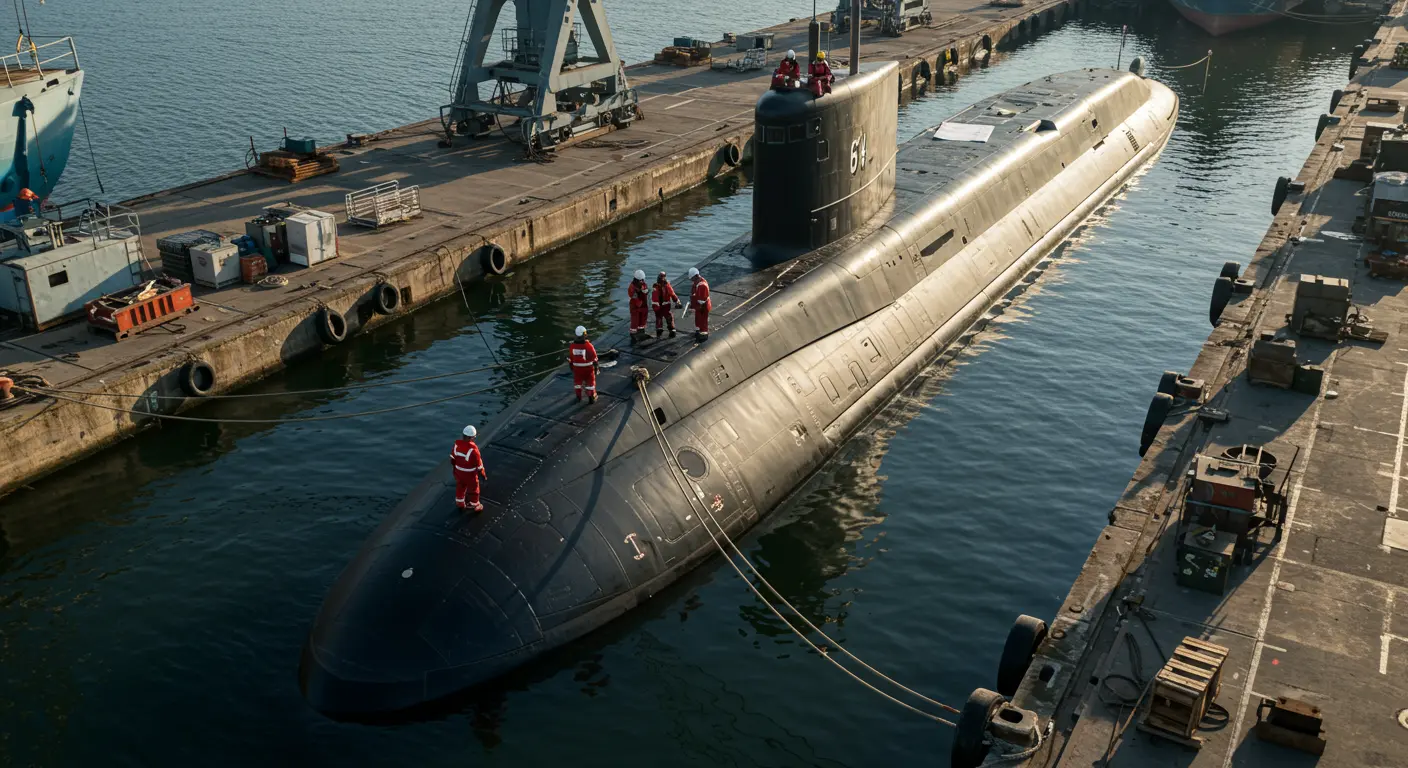How Much Does a Nuclear Submarine Cost? – Comprehensive Guide
Understanding Nuclear Submarine Costs – An Overview
Nuclear submarines stand as the pinnacle of military engineering—sophisticated vessels whose substantial costs reflect their complex design, advanced technology, and unparalleled strategic value. These underwater titans command price tags that vary dramatically depending on their classification and operational capabilities.
Nuclear-powered submarines fall into two primary cost categories:
-
Ballistic Missile Submarines (SSBNs): As the most expensive class, these vessels cost between $10 billion and $20 billion each. They are critical components of nuclear deterrence strategies.
-
Attack Submarines (SSNs): A less expensive category, these submarines typically cost between $2 billion and $5 billion each. Their lower price reflects differences in size, armament, and mission compared to SSBNs.
These figures represent only the initial investment. Lifetime operational expenses often multiply the total cost to several times the initial acquisition cost throughout a submarine’s decades-long service life—as detailed in the following analysis.
Types of Nuclear Submarines and Their Costs
Real-world acquisition programs frequently exceed individual vessel costs by significant amounts. Consider Australia’s ambitious pursuit of 3-5 Virginia-class submarines: a $200-400 billion investment despite each unit’s $3.5 billion production cost. Why such a dramatic disparity?
Ballistic Missile Submarines (SSBNs) – Pricing Insights
The U.S. Navy’s Columbia-class SSBN program—destined to replace the aging Ohio-class fleet—exemplifies this extraordinary expense. Each submarine incorporates advanced technologies that justify its premium price:
What drives SSBNs to such financial heights? Several critical factors converge:
International SSBN programs follow similar cost structures. France’s Triumphant-class and Britain’s Vanguard-class submarines demand comparable financial commitments, while Russia’s Breadless and China’s Type 094 vessels likely represent similar investments. This pattern reflects a fundamental reality: maintaining a credible sea-based nuclear deterrent comes at an extraordinary price.
Attack Submarines (SSNs) – Cost Breakdown
Attack submarines occupy a more modest—though still formidable—price range of $2-5 billion. The U.S. Navy’s workhorse Virginia-class submarines, for instance, command approximately $3.4 billion per vessel.
Future programs anticipate higher costs. The next-generation SSN(X) program carries an estimated price tag of $6.7-8 billion per vessel—a reflection of the advanced technologies required to counter emerging threats.
The cost of a modern attack submarine is broken down into several key areas:
-
Hull and Structure: ~30%
-
Propulsion Systems: 20-25%
-
Combat Systems: 15-20%
-
Other Systems: The remainder covers life support, communications, and auxiliary equipment.
International SSN costs reveal intriguing variations. Britain’s Astute-class submarines cost roughly $2.2 billion (£1.6 billion) each, while France’s Barracuda-class vessels run approximately $1.8 billion (€1.5 billion). These disparities often reflect national differences in labor costs, industrial efficiency, and technological approaches.
Cruise Missile Submarines (SSGNs) – Financial Overview
Cruise Missile Submarines offer a distinct cost profile—they’re typically born from extensive conversions of existing ballistic missile submarines rather than fresh construction. The primary expense lies in the complex modification process, exemplified by the transformation of Ohio-class submarines for cruise missile deployment.
While detailed conversion costs remain closely guarded secrets, they represent substantial additional investments beyond the original multi-billion dollar SSBN price tag. The U.S. Navy’s conversion of four Ohio-class submarines into SSGNs demonstrates this strategic approach.
This conversion strategy offers significant cost savings compared to new construction. By repurposing existing hulls, propulsion systems, and major components, navies acquire significant strike capabilities for a fraction of a new vessel’s cost—an effective use of existing assets.
Factors Influencing Nuclear Submarine Costs
The purchase price is only the beginning of total submarine costs. Total lifecycle costs encompass substantial expenses spanning decades:
Design and Technology – Cost Implications
Advanced design and technology drive the highest costs. Stealth capabilities—critical for mission success—can add billions to a submarine’s price tag. These capabilities depend on:
Nuclear propulsion systems require substantial investment. These compact yet powerful reactors must operate flawlessly for decades without refueling—a requirement requiring precise engineering and comprehensive safety measures that increase overall costs. SSBNs face additional complexity through their intricate missile storage and launch systems.
Numerous other systems add to total costs, their seamless integration requiring meticulous engineering and exhaustive testing:
Size and Materials – Their Impact on Pricing
Submarine dimensions and materials significantly affect pricing. Larger vessels like SSBNs command higher prices not merely due to scale, but because of the exponential engineering complexity required to maintain hull integrity under crushing deep-ocean pressures.
Material selection significantly affects final costs. Critical components include:
Specialized manufacturing processes introduce additional expense layers:
Labor and Production Expenses – A Cost Analysis
Labor costs account for significant costs, as construction demands large teams of highly specialized professionals whose rare skills command premium compensation. Essential roles include nuclear-qualified welders, security-cleared electrical engineers, and nuclear propulsion specialists.
The construction process itself differs from standard shipbuilding. Rigorous quality control standards far exceed typical maritime requirements, with each component undergoing multiple inspections and generating extensive documentation. This meticulous approach substantially increases labor hours and costs—a necessary burden given these vessels’ critical national security importance.
Future Trends in Nuclear Submarine Costs
Nuclear submarine costs continue to rise. The U.S. Navy’s next-generation SSN(X) demonstrates this increase, with estimates ranging from $6.7-8 billion per vessel—a dramatic leap from the Virginia-class’s $3.4 billion price point.
Future ballistic missile submarines remain the most expensive naval assets ever conceived. The Columbia-class program’s estimated $128 billion lifecycle cost for 12 submarines makes it one of the most expensive naval programs in history.
Several factors contribute to these escalating expenses:
Despite high costs, governments continue prioritizing submarine programs for their irreplaceable strategic value. The extraordinary price tags reflect comprehensive capabilities spanning intelligence gathering, power projection, and nuclear deterrence—making submarines essential elements of national defense arsenals.







